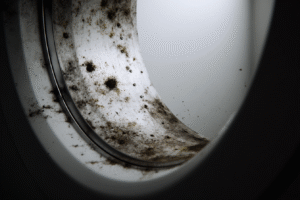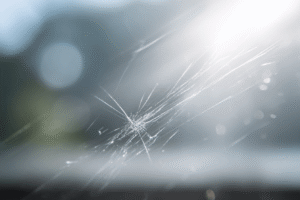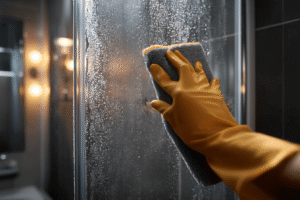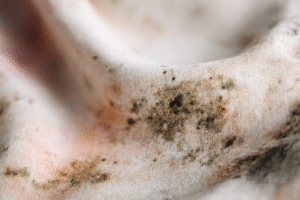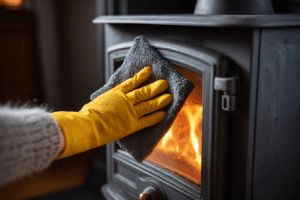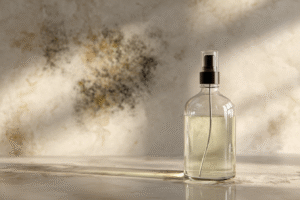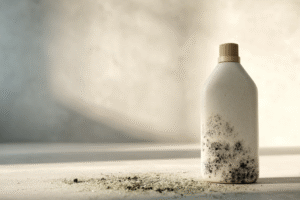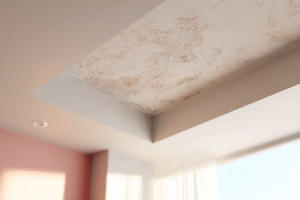Summarise this article with:
Time to say “Bye bye blurry glass!” With the right techniques and everyday household items, you can make the appearance of scratches disappear and restore your surfaces to their former glory. No abrasive materials needed—just a bit of elbow grease and our expert tips. We’ll be there for you!
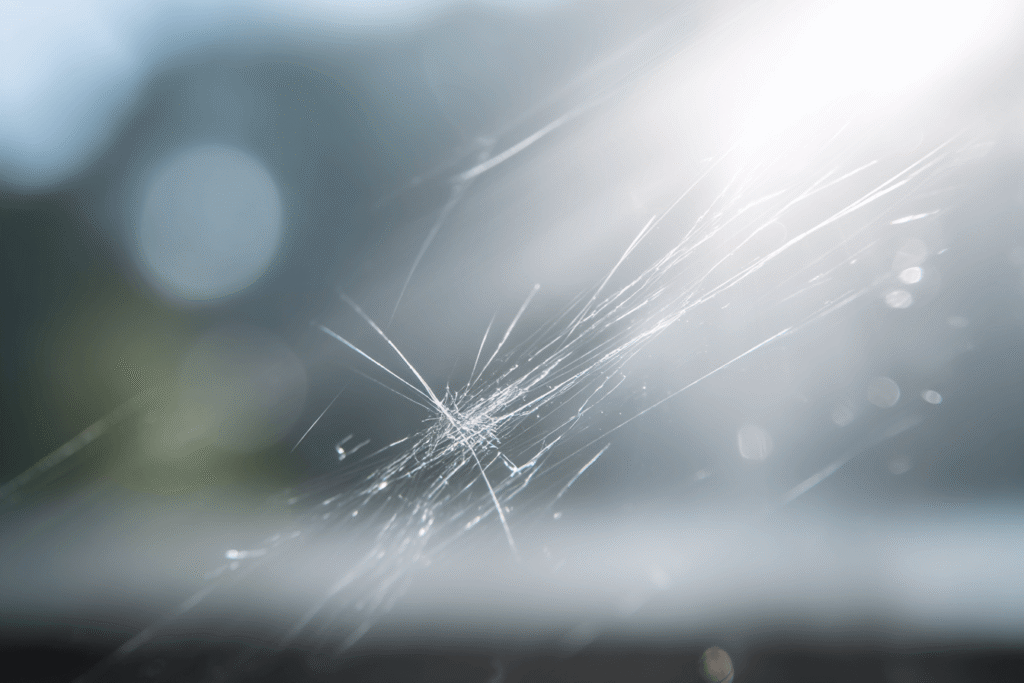
Assessing Glass Scratch Damage & Depth
Identifying Scratch Types & When DIY Works
Before tackling any repair, determine the depth of the scratch – this dictates which method will work best. Run the fingernail test first: if your nail glides smoothly across without catching, you’re dealing with superficial scratches perfect for DIY fixes. If your nail catches, those deeper scratches need more intensive treatment.
Surface scratches feel smooth, appear as fine lines, and can usually be buffed out with household items. Deep scratches catch your fingernail, create visible distortion, and typically require professional help.
DIY methods work brilliantly on fresh damage. Minor scratches on glass tabletops respond better than old ones where dirt has settled in the grooves. Lighter scratches on tabletops can often be remedied with gentle polishing techniques, while deeper marks may distort light and require specialist attention. Ideal scenarios include light marks on windows from cleaning with abrasive materials and surface-level damage on phone screens.
For best results, work with clean surfaces, scratches shorter than 2-3 inches, and recently occurred damage. Tackle problems early – waiting months allows dirt to settle in, making scratches harder to buff out with household remedies like baking soda.
Tools You’ll Need for Repair
The right equipment makes all the difference between success and frustration. Most effective tools already live in your kitchen or bathroom:
- Soft cloth or microfiber towels (never paper towels)
- Baking soda and water for creating gentle abrasives
- Non-gel toothpaste with mild abrasives
- Glass cleaner for surface preparation
- Clear nail polish for filling deeper scratches
- Fine steel wool (for pros only – proceed with caution)
Optional power tools include rotary tools with felt wheel attachments and orbital sanders with soft buffing pads.
Start with gentle methods first, working your way up from mildest to strongest – you can always add pressure, but you can’t undo aggressive polishing. For scratches that catch your fingernail or appear too deep, consider contacting a professional glass repair service to avoid making the damage worse.
DIY Methods to Remove Glass Scratches
Baking Soda Paste Technique
Mix equal parts baking soda and water to create a thick paste. Apply directly to the scratched area with a soft microfiber cloth. Work the paste into the scratch using small circular motions for 30 seconds with gentle pressure. Rinse thoroughly with clean water and pat dry. Repeat up to three times if needed, allowing the glass to dry between applications.
Top tip
Work the paste into the scratch thoroughly, as the mild abrasive action is what buffs away those annoying marks. Like exfoliating your face, but for glass!
Toothpaste Buff Method
Choose non-gel, white toothpaste without whitening agents. Apply a pea-sized dab directly onto the scratch and work it into the damaged area with a lint-free cloth using gentle circular motions for 30-60 seconds. Rinse thoroughly and dry to check progress. This method works brilliantly on pans, glass tabletops, and even phone screens. Skip this method if your fingernail catches in the scratch.
Top tip
Don’t over-polish glass tabletops as this can alter the appearance of scratches, making them look cloudy instead.
Clear Nail Polish Application
This technique acts as a filler rather than an abrasive. Clean and dry your glass surface thoroughly, then use transparent nail polish to paint a thin layer directly over each scratch. Let cure for one hour, then dampen a cloth with nail polish remover and gently wipe away excess from surrounding glass. Works brilliantly for deeper scratches that other methods can’t handle.
Top tip
For best results, apply in a dust-free environment – nobody wants bits trapped in their newly filled scratch. Easy peasy lemon squeezy!
Brasso Metal Polish Treatment
Brasso metal polish tackles scratches that gentler methods can’t handle. Start with a clean, dry surface and use a soft cotton cloth to apply a small dab using steady, overlapping strokes. Polish for several minutes until the scratch fades, then buff with a fresh cloth. Does Brasso remove scratches from glass? Yes, it fills microscopic imperfections while smoothing the surface for a professional finish. Cost: £5-8 per bottle, which is a small price to pay considering careless cleaning is the first place scratches often happen.
Top tip
A little goes a long way – one bottle can handle dozens of repairs. Think of it as your glass’s little saviour in a tin!
Glass Scratch Remover Screwfix: Does It Work?
| Product | Scratch Depth | Price Range |
|---|---|---|
| 3M Glass Polishing Compound | Medium–Deep | £15–20 |
| G3 Glass Polish | Light–Medium | £8–12 |
| G10 Professional Formula | Deep | £20–25 |
These products typically outperform DIY methods but cost more and may require additional tools like rotary polishers.
Top tip
If you’re dealing with multiple stubborn scratches, investing in a proper kit will save you time and frustration. Bye bye scratchy glass!
Remember: always start with the gentlest method first and work your way up to stronger solutions only if needed – that’s the best way to avoid damaging your glass surfaces. Harsh cleaners might seem tempting for stubborn stains and scratches, but they often create more problems than they solve!
Specific Glass Surface Repairs
Window and Windscreen Scratch Removal
Car windscreens need special attention because visibility matters for your safety on the road. Run your fingernail across the scratch—if it glides smoothly, you’ve got a light scratch perfect for DIY repair. For these surface marks, try cerium oxide polish mixed with water or automotive glass repair kits. Deep scratches that catch your fingernail require professional attention – your windscreen provides up to 60% of your car’s structural integrity, making DIY repairs risky for safety. Warning: Never confuse scratches with cracks! Cracks indicate structural damage and require immediate professional attention, as they compromise the integrity of the entire windscreen and can spread rapidly.
Window Scratch Repair at Home
For home window scratches, the depth test is crucial—if you can feel it with your fingertip but not catch your nail, it’s ideal for DIY repair. Try the nail polish method – apply clear coat directly over the scratch, let it dry for an hour, then gently remove excess with nail polish remover and a damp area with water. Alternatively, cerium oxide (available at hardware stores) works brilliantly when mixed to a slurry and applied with a felt pad in gentle circular motions. DIY methods work best in the first place, so tackle scratches early before dirt settles in the grooves. Always test on an inconspicuous area first!
Glass Table Top Restoration
Glass tables take quite a beating in daily life. To judge scratch depth, hold a light at an angle—if the scratch casts a shadow, it’s deeper than surface level. Furniture wax proves surprisingly effective – apply a thin coat directly over scratches, working it into grooves with a soft cloth. For persistent marks, try the nail polish method we covered earlier. Test any technique on the table’s underside first to ensure it won’t affect glass clarity.
Top tips to prevent future damage:
- Use felt pads under all items placed on glass surfaces
- Invest in glass-specific placemats and coasters
- Clean with microfiber cloths only, never paper towels
Induction Hob Scratch Repair
Induction hobs scratch easily – that sleek surface shows every mark. Judge depth by how the light reflects—superficial scratches appear as faint lines. For light scratches, use ceramic hob cleaner with circular motions or a thick baking soda paste, then wipe the area with water to remove residue. Deeper scratches require specialist glass repair kits designed for high-heat surfaces. Never use abrasive cleaners – they’ll create more scratches than they remove. DIY methods work best in the first place, so be proactive with prevention rather than waiting for severe damage.
Black Glass Stove Top Scratch Repair Tips
Black glass cooktops require special care as scratches show prominently against the dark surface. Use the light reflection test—if you can see the scratch but not feel it, it’s superficial. Specialist cream cleaners designed specifically for black glass provide the best results. For minor scratches, try commercial scratch removal compounds containing cerium oxide. Work in small sections with a microfiber cloth, rinse the area with water thoroughly, and always follow with a glass-specific cleaner to restore that mirror-like shine. Remember, DIY methods work best in the first place—tackle scratches when they first appear for optimal results. You can also read our full article on how to clean the glass on your log burning stove.
Can toothpaste remove scratches from glass?
Yes, toothpaste can remove light scratches from glass surfaces! Non-gel, regular white toothpaste works best as it contains mild abrasives that gently polish out superficial marks. Apply a pea-sized amount directly to the scratch, then use a soft microfiber cloth to buff in circular motions for about 30 seconds. Rinse thoroughly and dry to see results.
Be careful though—toothpaste only works on scratches that don’t catch your fingernail. Overusing abrasive materials can actually create more scratches or damage protective coatings on specialty glass. For deeper scratches that you can feel with your nail, skip the DIY remedies and call the professionals—they’ll have the proper tools for the job. Check our comparison table below for cost-effective alternatives!
Prevention Strategies: Keep Glass Scratch-Free
Daily Cleaning Habits
Want to keep your glass sparkling and scratch-free? We’ve got you covered! Follow these simple habits and say bye bye to those pesky scratches:
- Use microfiber cloths only – Paper towels might seem convenient but they’re secretly plotting against your glass with tiny abrasive particles. Stick with soft microfiber for a scratch-free relationship with your surfaces.
- Clean weekly with gentle products – Regular cleaning prevents dust build-up that can become abrasive when wiped. Vinegar and water solutions work brilliantly without harsh chemicals.
- Avoid steel wool and abrasive sponges – These are the villains in your glass cleaning story! They’ll leave you with more scratches than when you started. Stick with soft materials only.
- Trim nearby branches – For outdoor windows, keep trees and shrubs trimmed to prevent scratching during windy days. Easy, peasy lemon squeezy!
You can see our full guide on how to clean your glass for the best cleaning tips !
Protective Products & Films
Prevention is always better than cure – especially when it comes to your precious glass tabletops! Invest in these protective solutions:
| Product | Cost | Where to use |
|---|---|---|
| Anti-scratch polyurethane films | £15–30 | Phone screens, glass tables |
| UV protective window films | £25–40 | Windows, display cabinets |
| Silicone corner protectors | £5–10 | Glass table edges |
These protective films create a sacrificial layer that takes the damage instead of your glass surface. They’re particularly effective on high-traffic items like coffee tables and smartphone screens.
For valuable antiques or decorative pieces, consider felt pads under any items placed on glass surfaces. And remember, if prevention fails, a professional glass repair service can often rescue even badly damaged surfaces – though it’ll cost you significantly more than these preventative measures.
Frequently Asked Questions – Removing Scratches from Glass
Can you use T-Cut to remove scratches from glass?
+T-Cut can work on minor glass scratches, especially their specialized glass formula. Apply with a soft cloth using circular motions, but remember it’s only effective on light surface marks—deep scratches will need stronger remedies. Bye bye scratchy glass!
Does WD-40 remove scratches from glass?
+WD-40 isn’t an actual scratch remover but can temporarily fill tiny scratches, making them less visible. It’s more of a quick fix than a permanent solution—like putting a plaster on a broken heart. Try cerium oxide for proper repairs instead.
Does baking soda actually remove scratches from glass?
+Baking soda works as a mild abrasive that can buff out shallow scratches when mixed into a paste with water. It’s not magic for deeper scratches though! Think of it as the Taylor Swift of glass remedies—surprisingly effective but with limitations.
How do you remove scratches from car window glass?
+For car window scratches, use cerium oxide powder mixed with water and buff with a microfibre cloth in circular motions. For deeper marks, you might need a rotary tool with a felt wheel—or call in the professionals. We’ll be there for you!
How do you remove scratches from a glass hob or cooktop?
+Clean your glass hob first, then apply a specialized ceramic hob cream with a soft cloth using gentle circular motions. For stubborn scratches, try a baking soda paste, but avoid steel wool which can make things worse. Easy peasy lemon squeezy!
What grit sandpaper should you use to remove scratches from glass?
+Start with ultra-fine 2000-grit wet sandpaper for glass scratch removal, then progress to 3000 and 5000-grit for polishing. Always keep the surface wet while sanding and follow with cerium oxide for that crystal-clear finish. Smooth as a 90s pop ballad!
How do you remove scratches from glass?
+Mix equal parts baking soda and water to create a thick paste, then apply to the scratch with a soft cloth using circular motions. For deeper scratches, try toothpaste or cerium oxide polish. Wipe clean and repeat if needed. Sparkle like it’s 1999!
How do you remove scratches from glasses?
+For spectacles, apply a tiny dab of non-gel toothpaste to the scratch with a microfibre cloth using gentle circular motions. Rinse thoroughly and dry. Avoid DIY fixes on coated lenses—they might damage your specs!
How do you hide scratches in glass?
+Clear nail polish works wonders! Apply a thin layer directly over the scratch, let it dry completely, then gently remove excess with nail polish remover on a cotton bud. It fills in the grooves making scratches nearly invisible. Sneaky but effective!
How do you remove deep scratches from glass?
+For scratches that catch your fingernail, try cerium oxide powder mixed with water applied with a felt polishing wheel. Work slowly and patiently in circular motions. If that fails, it’s time to call in the professionals. Some things are beyond DIY!



